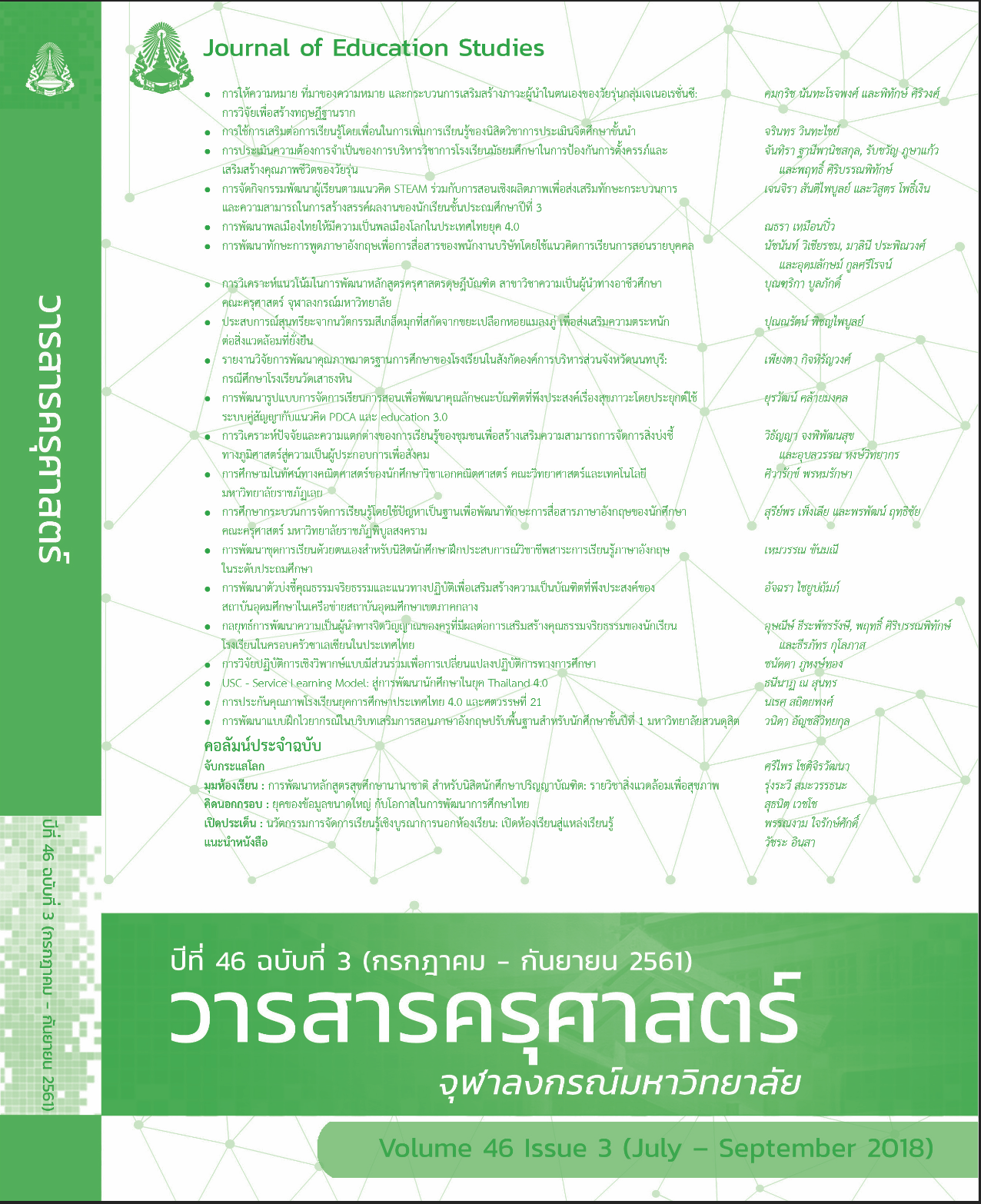USC- Service Learning Model: สู่การพัฒนานักศึกษาในยุค Thailand 4.0
Keywords:
SERVICE LEARNING MODEL, STUDENT DEVELOPMENT 4.0, SOCIAL RESPONSIBILITIESAbstract
Abstract
The model and main component of Service Learning (SL) in higher education is a change of paradigms that focus on learners and appear as a collaborative tripartite: higher education institutions, students and the community to organize the learning processes. This covers all the practical learning, and reflects the result of students gaining experience in service working with the community.
SL thus requires the Appropriate Model and Main Components as referred to in the UCS- Service Learning Model (University-Community-Student-Service Learning) in the management and teaching process-related parts, which was presented and critically analyzed in 6 components: 1) Curriculum design and service activities; 2) Tripartite cooperation and diversity; 3) Community needs and requirements; 4) Community relationships and collaboration; 5) Continuous assessment and evaluation; and 6) Reflection and analysis.
In addition, all of these proposed SL components link to lead the clear definition of the roles and responsibilities of the three common practices. The higher education institutions provide academic service to society, and produce complete graduates according to the main mission set by the university. The students have gone through a process of learning that actually leads to behavioral changes, analytical thinking skills, and in a socially responsible manner. The community has benefited greatly from acquiring new knowledge for solving problems, and can bring knowledge from the community to exchange with the educational institutions. Such cooperation will lead to sustainable community developmentas the final achievement.



